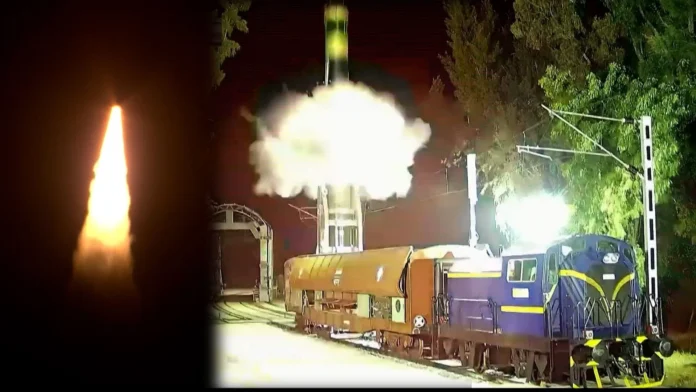In a significant stride toward enhancing its strategic deterrence capabilities, India has successfully test-fired the Agni-Prime missile from a rail-based mobile platform. The development not only strengthens the country’s second-strike capability but also signals a new phase in the evolution of India’s nuclear delivery systems—focusing on survivability, flexibility, and rapid deployment.
The Agni-Prime, also known as Agni-P, is the latest in India’s family of Agni-series ballistic missiles. Positioned as a new-generation, medium-range missile, Agni-P incorporates advanced features such as lighter composite materials, improved guidance systems, and greater accuracy. Its range, estimated at 1,000 to 2,000 kilometers, places it squarely in the category of regional deterrence, allowing India to cover key strategic locations in its neighborhood.
What makes the latest test particularly notable is the choice of launch platform. Traditionally, India’s missile arsenal has been deployed through fixed silos or road-mobile launchers. By conducting a test from a rail-based mobile platform, India has demonstrated a significant leap in operational flexibility. Rail mobility provides the advantage of concealment, mobility across vast stretches of the country, and the ability to disperse assets quickly in times of crisis. In strategic terms, this greatly enhances survivability against any potential first-strike attempts by adversaries.
The test also reflects India’s emphasis on developing a credible second-strike capability, which lies at the heart of its nuclear doctrine of “credible minimum deterrence” and “no first use.” In the event of a conflict, rail-based mobile launchers ensure that missile assets remain hidden, mobile, and ready for retaliation, thereby reinforcing the credibility of India’s deterrence posture.
From a technological standpoint, the Agni-Prime represents a generational upgrade over earlier Agni variants. With a two-stage solid propellant engine, advanced navigation, and canisterized design, the missile is designed for rapid launch with minimal preparation. Its reduced weight and advanced composite casing not only improve range-to-weight ratio but also facilitate easier transport on diverse mobile platforms, including both road and rail.
Strategically, this capability has broader implications for regional stability. While India has consistently maintained that its missile development is not country-specific, the timing and symbolism of such tests invariably draw attention in its neighborhood. Rail-based launch capability provides India with a dispersal advantage similar to systems deployed by major nuclear powers like Russia and China, underscoring its growing technological maturity in strategic forces.
The successful test also highlights the synergy between India’s Defence Research and Development Organisation (DRDO) and the country’s armed forces. As India moves toward integrating these advanced delivery systems into its operational arsenal, emphasis will likely shift toward developing robust command-and-control systems, secure communications, and real-time monitoring capabilities to ensure reliability under all conditions.
For the global community, the Agni-P rail-launch test serves as both a message and a reassurance. On one hand, it reaffirms India’s commitment to modernizing its nuclear deterrent while keeping pace with emerging threats. On the other, India’s consistent adherence to restraint and transparency in its doctrine continues to set it apart as a responsible nuclear power.
In the coming years, analysts expect India to expand its focus on survivable delivery systems, potentially including submarine-launched variants, hypersonic glide vehicles, and further advancements in missile defense integration. The Agni-Prime’s rail-based test marks a decisive step in this journey, underscoring India’s resolve to maintain credible deterrence while adapting to a rapidly evolving security environment.



